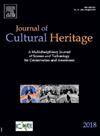Using nanocellulose mixtures for the wood stabilisation of a Lilienthal glider
IF 3.3
2区 综合性期刊
0 ARCHAEOLOGY
引用次数: 0
Abstract
At the end of the 19th century, Otto Lilienthal (1848–1896) built humanity’s first airplanes. The Deutsches Museum Munich owns Lilienthal’s personal glider since 1904 and investigates preservation methods since the 1980s. The wooden fragments were severely damaged by the so called ‘woodworm’. Therefore, the frame of the glider needed to be stabilised in order to preserve it for future handling during conservation and exhibition. The choice of materials followed methods used at the University of the Arts Bern in Switzerland. In particular, the approach to reinforce Methyl cellulose with Nanocellulose was further investigated for the purpose of stabilising the infested wood of the glider. Pre – tests with celluloses showed that they meet the requirements of the conservation concept. Therefore, an object-related laboratory testing series was carried out in collaboration with the Leibniz Institute for Materials Engineering - IWT in Bremen, Germany. The laboratory results enabled the celluloses to be applied with respective to individual situations of the wooden fragments of the glider in 2024. They proved to be practical as wood stabilising agents, and the characteristic thixotropy of Nanocellulose was beneficial while using the mixtures on the fragments of the glider. The chemical properties of celluloses, their almost unchanged surface appearance after drying, and the non-toxic application of this natural polymer make these mixtures an attractive and sustainable wood stabilisation agent for the conservation of historic wooden artefacts.
使用纳米纤维素混合物来稳定liilienthal滑翔机的木材
19世纪末,奥托·李林塔尔(Otto Lilienthal, 1848-1896)制造了人类第一架飞机。慕尼黑德意志博物馆自1904年起拥有李林塔尔的个人滑翔机,并从20世纪80年代开始研究保存方法。木碎片被所谓的“木虫”严重损坏。因此,滑翔机的框架需要稳定,以便在保护和展览期间保存它以供将来处理。材料的选择遵循了瑞士伯尔尼艺术大学使用的方法。特别是,进一步研究了用纳米纤维素增强甲基纤维素的方法,以稳定滑翔机的感染木材。对纤维素的预测试表明,它们符合环保概念的要求。因此,与德国不来梅的莱布尼茨材料工程研究所(IWT)合作进行了一系列与物体相关的实验室测试。实验室结果使纤维素能够在2024年分别应用于滑翔机木制碎片的个别情况。它们被证明是实用的木材稳定剂,纳米纤维素的触变性特性在滑翔机碎片上使用混合物时是有益的。纤维素的化学性质,干燥后几乎不变的表面外观,以及这种天然聚合物的无毒应用,使这些混合物成为一种有吸引力和可持续的木材稳定剂,用于保护历史悠久的木制文物。
本文章由计算机程序翻译,如有差异,请以英文原文为准。
求助全文
约1分钟内获得全文
求助全文
来源期刊

Journal of Cultural Heritage
综合性期刊-材料科学:综合
CiteScore
6.80
自引率
9.70%
发文量
166
审稿时长
52 days
期刊介绍:
The Journal of Cultural Heritage publishes original papers which comprise previously unpublished data and present innovative methods concerning all aspects of science and technology of cultural heritage as well as interpretation and theoretical issues related to preservation.
 求助内容:
求助内容: 应助结果提醒方式:
应助结果提醒方式:


